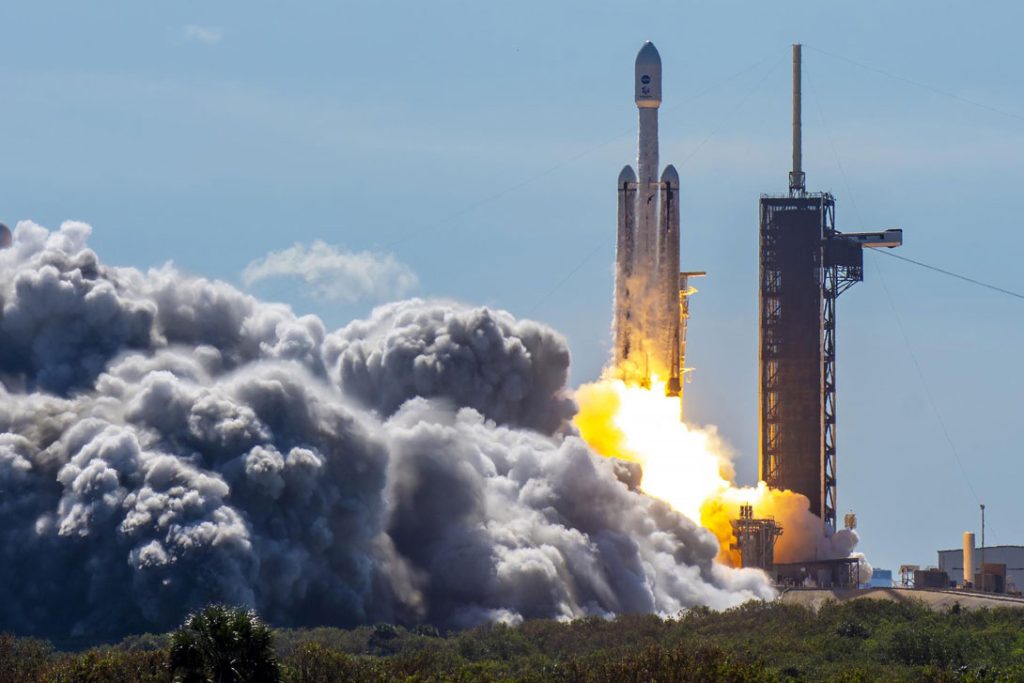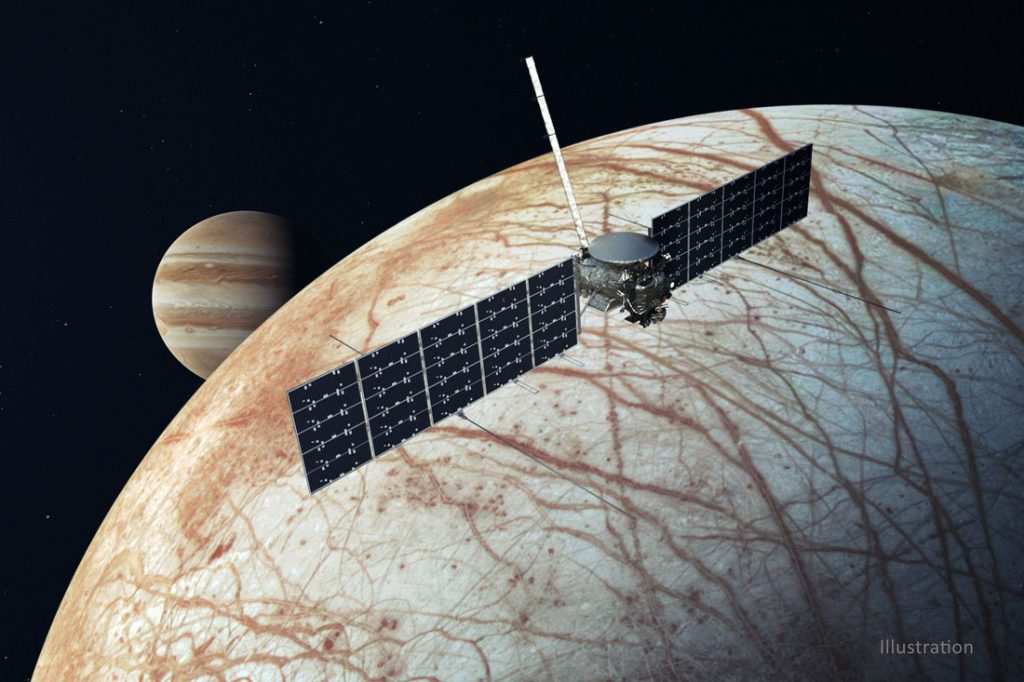On October 14, 2024, SpaceX’s Falcon Heavy rocket propelled NASA’s Europa Clipper on its ambitious journey towards Jupiter’s Moon, Europa.

Europa Clipper is not merely visiting space; it’s venturing into what might be one of the most promising places in our solar system for finding extraterrestrial life.
What will Europa Clipper do?
The spacecraft, laden with sophisticated instruments, will perform 49 flybys of Europa, utilizing each pass to delve deeper into its mysteries.
Europa, slightly smaller than the Moon, has long captivated scientists due to its potentially habitable environment. Beneath its thick ice crust, there might be an ocean twice the volume of all earth’s oceans combined, kept warm by tidal heating from Jupiter’s gravitational pull. The scientific community is particularly intrigued by the possibility of this ocean containing all the ingredients necessary for life: liquid water, energy sources, and organic compounds.

The Europa Clipper’s instruments, including a magnetometer on an 8.5-meter boom to minimize interference, will measure Europa’s magnetic field, potentially confirming the ocean’s existence and analyzing its depth and salinity. Other instruments will sniff out the composition of the ice and identify any geologically young surface areas where material from the ocean might have been recently deposited.
From mapping the surface with unprecedented detail to probing beneath the ice for signs of water plumes, the Europa Clipper will try to find answers to questions about life beyond Earth.
The journey to Europa is itself an odyssey. The spacecraft is scheduled to swing by Mars in March 2025 for a gravity assist before looping back toward Earth to gain speed. Ultimately, it aims for an arrival at Jupiter in April 2030.
Last minute scare
Europa Clipper’s launch was not without a scare. A last-minute hurricane delayed preparations, but NASA’s Kennedy Space Center team, alongside SpaceX’s capabilities, ensured the mission remained on course. The spacecraft’s solar panels, crucial for powering its journey far from the Sun, successfully deployed post-launch, signaling the beginning of its long voyage.